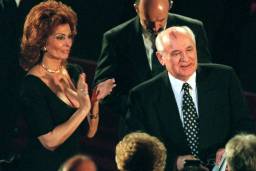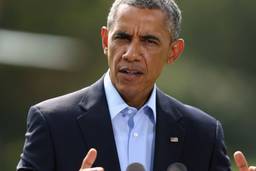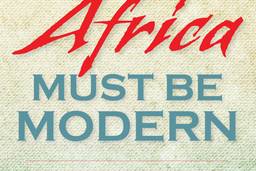Woodward’s betrayal of his journalistic duty — so common these days among his colleagues — would be ordinary and unworthy of comment were it not for his status as the dean of American investigative reporters. Woodward is an icon, and he remains influential, admired across the political spectrum, for his tenacity and stubborn empiricism. The touchstone of his greatness is clear: As a cub reporter in the ’70s, Woodward helped bring down President Nixon by exposing in the Washington Post the web of deceit and intrigue that lay behind a bungled burglary of a Democratic Party office in Washington’s Watergate hotel.
The media establishment repeatedly dismissed Watergate as irrelevant. But Woodward, along with his co-reporter Carl Bernstein and legendary Post editor Ben Bradlee, resisted pressure to abandon their investigation, overcoming skepticism even from within their own newsroom.
Watergate made Woodward a star; Robert Redford even played him in a hit movie. While he remained at the Post as a reporter and editor, Woodward gradually acceded to the pressure of his own reputation. To bolster his journalistic “brand” as a scoopmeister, he gradually turned from hard-hitting exposure to titillating gossip. Woodward married his reportage to a crass form of literary journalism, revealing powerful figures by getting inside their heads. At first mildly critical, these stream-of-consciousness accounts (for example, Veil: The Secret Wars of the CIA: 1981-1987 or The Commanders, about the invasion of Panama) turned increasingly fawning.
By the time Woodward published an account in 2000 of Federal Reserve Chairman Alan Greenspan, his apotheosis from muckraker to cheerleader was complete. Maestro: Greenspan’s Fed and the American Boom appeared almost simultaneously with the collapse of the Internet bubble and the outbreak of global economic crisis. Both developments threaten to ruin Greenspan’s reputation for economic wisdom — and highlight the reinvention of Woodward as publicist.
— — — — –
In Bush at War, Woodward again shows his flair for public relations. Woodward makes much of his sources, boasting of an “inside account, largely the story as the insiders saw it, heard it and lived it.” This “inside” account relies chiefly on self-serving recollections of the chief participants (Bush, Vice President Dick Cheney, Defense Secretary Donald Rumsfeld, Secretary of State Colin Powell and National Security Adviser Condoleeza Rice) and sanitized transcripts of meetings in which the main players sound like they’re playing to a televised audience rather than speaking to each other.
“I’m doing a press conference tonight,” Bush declares at the start of one meeting, according to Woodward. After descriptions of dozens of similar set pieces, Woodward comments that Bush in his private meetings does seem to be speaking in media-bites rather than to his comrades, which suggests that he should have titled his book Bush at Meetings. Woodward is more likely to tell us what the president is wearing, or who is present (or absent) at meetings, than tackle the big questions that remain unanswered about September 11 and the official U.S. reaction.
Absent from the book, for instance, is any mention of how and why, seven days after the 9/11 attacks, Bush organized the removal from the United States of dozens of bin Laden’s relatives on behalf of friends in Saudi Arabia, without even assessing whether these Saudis might assist in the U.S. investigation. To quote Frank Rich of the New York Times, who listed a number of Woodward’s omissions in a recent column: “The truly sensitive issues for the Bush administration are those that are given short shrift in the book or left out entirely. We hear no inside accounts of its failure to track down the anthrax terrorists. John Ashcroft’s inability to arrest a single terrorist during his post-9/11 mass roundups goes unnoticed.”
— — — — –
Oddly, the strongest parts of Bush at War take place on the ground in Afghanistan. Woodward intersperses his account of Washington meetings with the exploits of the first CIA team sent into Taliban territory. The team, codenamed Jawbreaker, is shown handing out cash to Afghan warlords. Woodward remains uncritical of these CIA agents, and of the Pentagon Special Forces units who later join them. He ends the book with a strange image of a group of them creating a 9/11 memorial in the Afghan mountains. One of the Americans vows, “We will export death and violence to the four corners of the earth in defense of our great nation.”
The declaration rings false, as does Bush’s imitation, throughout the book, of a lone gunslinger who intends to clean up the Wild West. Despite all the war-mongering rhetoric, Bush and his administration have actually failed to meet fire with fire; bin Laden and his top lieutenants have largely escaped U.S. wrath. Characteristically, Woodward says little about the setbacks in the war on terrorism, but he cannot completely erase from view the evidence that Bush and his cohorts view September 11 as a boon: an opportunity to extend American military power and ignite a new phase of U.S. imperialism.
The president’s smug confidence that the United States can and will police the world obscures but does not eliminate from Woodward’s account (largely in the form of Colin Powell’s forebodings) that the source of global resentment toward the United States is rooted, in large measure, in U.S. policies and practices.
But Woodward can be excused for failing to grasp the seeds that doom American imperialism to failure. He has become, after all, a novelist rather than a journalist, and a poor one at that.








